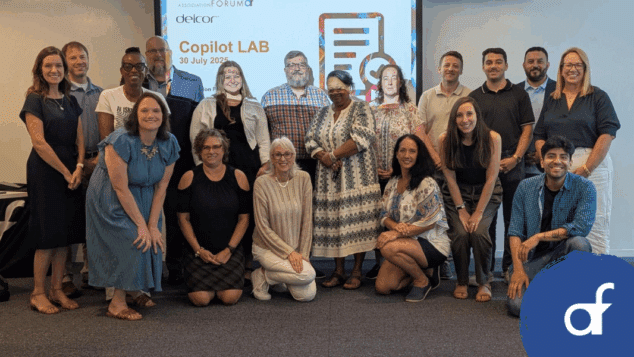Double Your Footprint: Enhancing Conferences with a Hybrid Event Workflow

Hybrid events blend in-person and virtual participation, offering flexible access for attendees and broadening an event’s reach. By combining on-site engagement with a digital experience, hybrid events can attract diverse audiences, boost revenue, and enhance sponsorship visibility. However, successful hybrid events require careful planning to ensure seamless integration between the two formats, with targeted strategies for audience engagement, sponsor opportunities, and efficient event management.
What Are Hybrid Events?
A hybrid event combines the in-person experience with a virtual path to create a unified participant experience for all involved. The Hybrid Model allows participants to engage in person for those who seek traditional face-to-face interactions, while also providing the flexibility for others to join virtually, whether due to budgetary constraints, health concerns, or unforeseen circumstances.
While the term “virtual” might invoke unfond memories of endless hours staring at a computer screen, the era of fully virtual conferences taught us valuable lessons. Organizations discovered they could reach previously inaccessible members, tapping into new audiences and expanding association connections. As exhibitors, sponsors, and participants reassess available travel expenses and budgets, associations are striving to engage as many members as possible. When executed correctly, hybrid events merge the undeniable benefits of in-person engagement with the vast reach of virtual events, maximizing potential for all involved.
What are the Benefits of Hybrid Events?
Every association and event has unique goals, but a common objective is to attract as many attendees as possible. By embracing a hybrid strategy, your event can cater to both in-person and virtual participants, ensuring a compelling experience for each group. Hybrid events remove physical limitations, expanding your event’s reach beyond geographical boundaries and onsite dates. This extended presence creates opportunities for multi-touch online engagement and content repurposing throughout the year.
Additionally, hybrid events offer significant advantages in terms of expanding registration revenue and sponsorship opportunities. Sponsors have a chance to double their exposure potential with both physical and virtual placements. The digital environment creates new avenues for brand awareness, while providing detailed metrics and enhanced lead generation. Offering sponsors diverse, innovative opportunities not only boosts sponsorship dollars but also attracts a broader range of sponsors for partnerships.
How do you Overcome Potential Challenges of Hybrid Events?
Although a hybrid event is a single gathering, in concept, it involves planning two distinct events that occur simultaneously. The key challenge is ensuring that these two experiences; one for in-person attendees and another for virtual participants, are seamlessly integrated while also tailored to their respective audiences. A common mistake is treating the hybrid event as a singular experience, but recognizing the need to craft distinct, robust experiences for each group is crucial.
To achieve this, symbiosis:
- Create a unified and valuable experience for all attendees
- Coordinate the timing of live events with broadcast/streaming schedules.
- Plan how to keep in-person speakers and audiences connected with virtual participants and speakers.
- Manage the costs and logistics of two separate event experiences.
Addressing these challenges early in the planning stages is essential. Ensure that all attendees, whether in-person or virtual, have access to similar content so no one feels isolated. Plan how virtual attendees can engage with the live venue and select a virtual platform that integrates smoothly with your existing registration and conference systems. The goal is to avoid duplicating efforts and minimize potential miscommunication or scheduling conflicts. The technology should unify the event, seamlessly connecting in-person and virtual audiences.
Deploy Innovative Strategies for Engaging Hybrid Event Participants
To connect onsite and virtual participants, consider using:
- Event apps
- Social feeds
- Q&A live streams
- Community chats
- Gamification
- Two-way video opportunities for virtual audiences to be projected onto screens onsite and within sessions
- A dedicated host to emcee for the virtual audience
- Unique experiences exclusive to virtual participants to encourage registration and engagement
Maximizing Sponsor Value in Hybrid Events
Sponsors might initially hesitate to invest in the virtual side of your event due to concerns about limited exposure. However, by offering creative sponsorship opportunities, you can clearly demonstrate ROI and the myriad benefits of participating. Consider providing sponsors with substantial brand exposure and numerous opportunities to connect with attendees, including:
- Sponsored live streaming content sessions
- Sponsored on-demand content
- Pre-recorded sponsor-hosted content
- Sponsor placement in banners/graphics
- Sponsor-branded activities (in-person and virtual)
- Virtual exhibit booths
- Dedicated sponsor session rooms for virtual 1:1 networking
- Post Event Analytics to support ROI
How do I manage the workflow of a Hybrid Event?
Finally, choose a platform that goes beyond a basic webinar setup. Opt for a comprehensive event platform that allows virtual and in-person attendees to share a cohesive, engaging experience. Direct your efforts into using a single source Event Management Platform will optimize the organization, efficiency and collaborative efforts of the Event Team. eShow provides a single source Event Management Platform that covers Registration, Exhibits & Sponsorship, Abstracts / Conference / Speaker Management, Mobile, Virtual/Webinar Hosting, Onsite Badge Printing, Onsite and Virtual Attendee and Hybrid Planning. Data and information can be shared across multiple modules, minimizing extra time and effort from your event staff. This data can be repurposed to provide Attendees with the best event experience, whether they are participating from home or at the event location.
FINAL TIP: See if adding a Virtual Component to your show qualifies you for Sustainability Credits!
Tags
Related Articles
The Power of Taking the AI Journey Together
Forum’s first Microsoft Copilot Lab brought together 20 professionals to explore how smart adoption of...
What to Wear to the Honors Gala 2025: SHINE ON in Style
Get ready to sparkle, shimmer, and most importantly—shine! Association Forum’s Honors Gala 2025 is on…
Content governance: Setting up your content for success
Why and how to create smart, sustainable systems and processes for all the content your...




